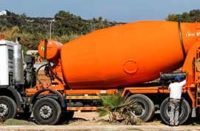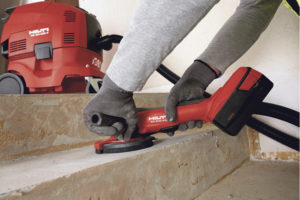 In this day and age, the almighty dollar seems to be the bottom line in any line of work. However, in concrete construction, there are too many dangers that lurk around every corner to not make safety a top concern.
In this day and age, the almighty dollar seems to be the bottom line in any line of work. However, in concrete construction, there are too many dangers that lurk around every corner to not make safety a top concern.
With rapid machinery progression and a booming construction market, it may seem that the health and well-being of workers in this industry may suffer for profit. That is a misconception that all five contractors I spoke with for this article wanted to address.
Changing mindsets
“We want to make safety a value, not a priority,” says Michael Schneider, vice president of Baker Concrete Construction, based in Monroe, Ohio. He wants to change the traditional ideology of safety from a compliance issue to a desired integral part of everyday life. The company stresses to their employees the importance of using common sense in the workplace. They want their employees to enjoy their lives at and away from the job site and believe that if an employee stays safe at work, he can enjoy life outside of work just that much more. This nationwide company makes sure that every one of their 3,000-plus employees takes part in their safety training and compliance programs; every foreman must complete OSHA-approved safety training courses. These courses can range from 10 to 30 hours and are mandatory. Such topics include Hazard Communication as well as First Aid and CPR training — the most important tools that each foreman must possess with Baker. The company’s employees begin each day with on-the-job stretches as well as overviews of how to use specific tools. Baker also has weekly “Tool Box Talks,” in which superintendents review each and every tool, piece of equipment and safety issue that may affect the given job.
Safety starts at the top
Seretta Construction, based in Apopka, Fla., believes that workplace safety must be supported by upper management. That is why every superintendent is required to attend every “Saturday Session,” as well as quarterly safety meetings. These “Saturday Sessions” are available for all employees; here, machinery, tools, and personal gear use are discussed in forum fashion.
Seretta’s focus on safety training is supported 100 percent by company executives and superintendents. Seretta believes that investing in the company’s safety is a profitable investment, “For every dollar invested in safety, you can get nine or 10 dollars in return,” says Seretta safety coordinator Michael Duncan.
Make training entertaining
Some companies are using exciting and creative strategies to get the point of safety across. P.J. Hoerr Inc., based in Peoria, Ill., holds monthly safety meetings in which the company uses interactive games to teach the dos and don’ts of the job site. The company has developed its own version of the once-popular game show “Who Wants to Be a Millionaire,” where employees answer questions concerning safety issues and have the ability to win more and more money with each correct answer. (The cash amount pales in comparison to the show … but you get the point.) P.J. Hoerr safety coordinator Steve Williams helps put on the spoof of the game show, but he also takes his job and company seriously, as does upper management. Williams speaks very highly of the entire company’s devotion to employee safety. “(CEO) Bob Hoerr instills the idea that safety is very, very important,” he says. “He believes that safety is the bottom line 100 percent.”
Acquaint the new guy with the dangers
Webcor Concrete, based in San Mateo, Calif., understands that with new employees come certain safety risks. “The length of time an employee has been with a company can be the determining danger factor,” says Webcor director of construction Chris Plue.
If a new employee is not used to certain equipment, he or she is more likely to use it wrong. Webcor has safety directors at every job site, and they employ five or six full-time directors on the biggest jobs. The safety directors teach weekly training sessions pertaining to tools, machinery, and type of job. Along with these briefings, every Monday morning the crews attend toolbox talks. These meetings not only focus on one of 52 preplanned topics (one for each week of the year), but they also double as the weekly safety meeting. During the toolbox talks, safety directors and supervisors cover such topics as crane rigging training, crane operator communication, forklift training and fall protection as well as job site traffic control. The reason that the toolbox talks are held on Monday is simple, says Rod Verrips, safety director with Webcor. It’s the beginning of the workweek; it’s time for the workers to focus on the task at hand and not what they did on the weekend.
Teaching safety as well as the art of concrete
Bob Harris, president of the Decorative Concrete Institute, based in Temple, Ga., is more of an instructor than a foreman, and DCI is an educational institution that trains students in the art of creative concrete production. But that does not mean Harris takes the issue of safety lightly with his students. The issue of safety and wellness is still his number one priority. Harris and his five instructors hold weekly safety meetings with students to teach the value of wearing safety gear and respecting the dangers of this trade. He believes hazard patrol is much easier in his company because it is so close-knit. “Since this is a small business, it’s much easier to oversee every part of the job and make sure they are doing things correctly,” he says.
Safety first
If an employee is hurt or not at his or her full potential because of an injury, it can cost not only the employee, but the company as well. Such things as workers’ compensation and an employee’s lost wages impact both ends. It is important for companies to invest the time and money upfront for proper training and the development of safety councils in order for business to keep thriving.















